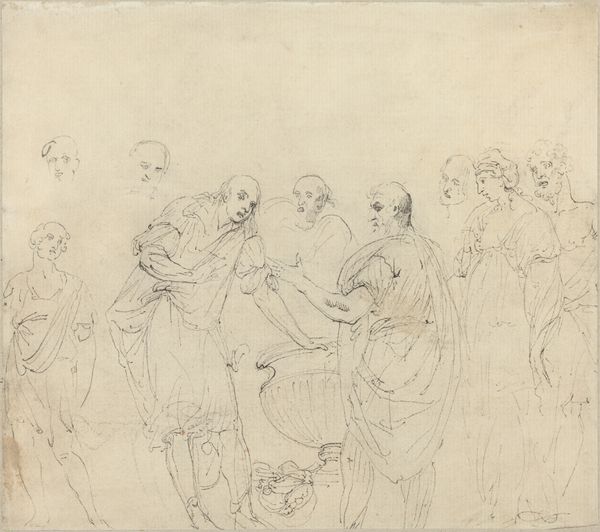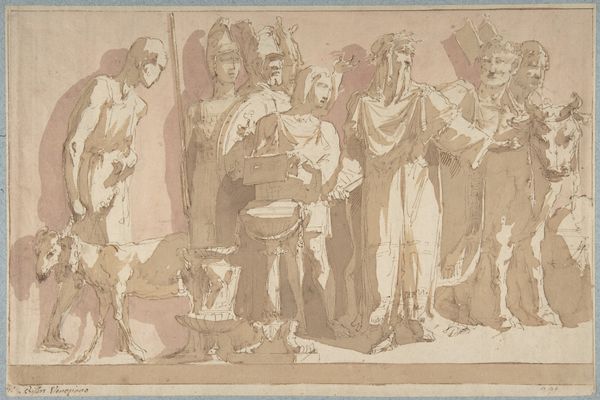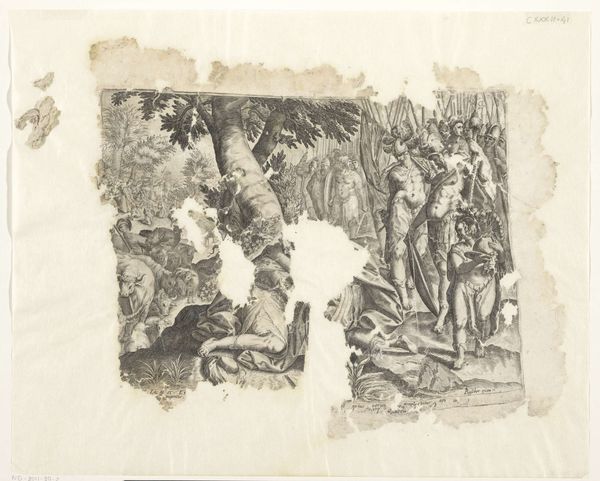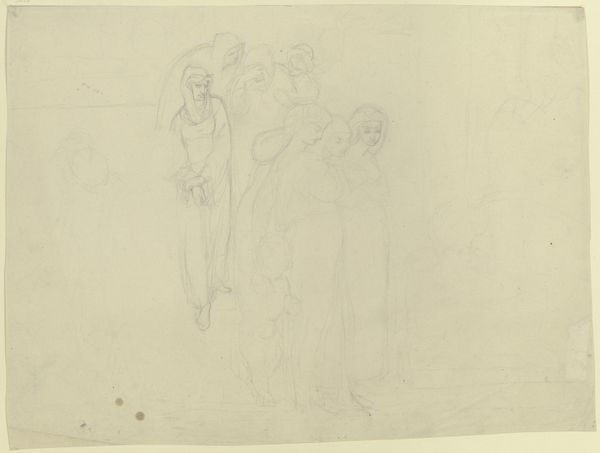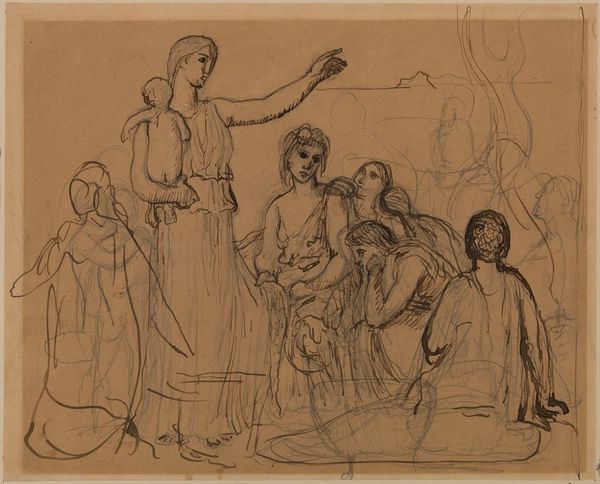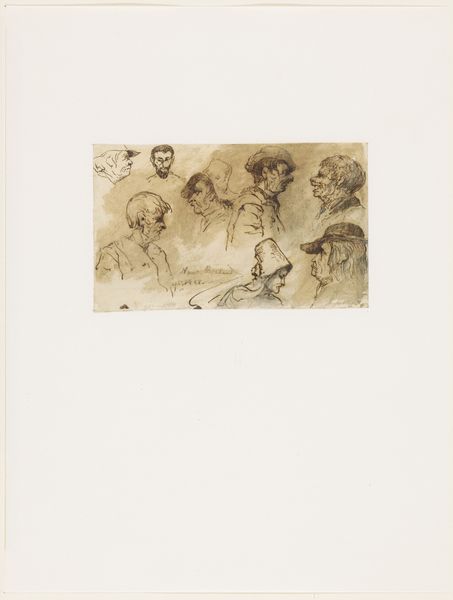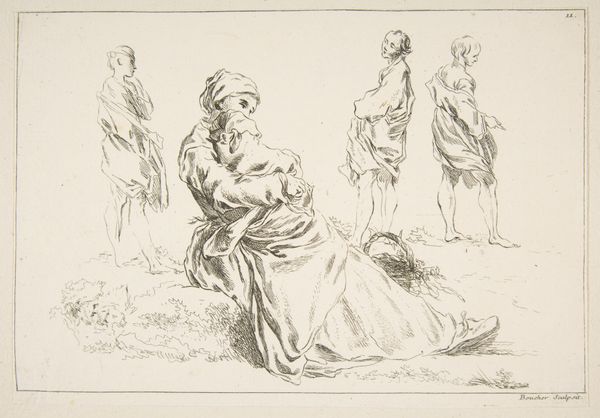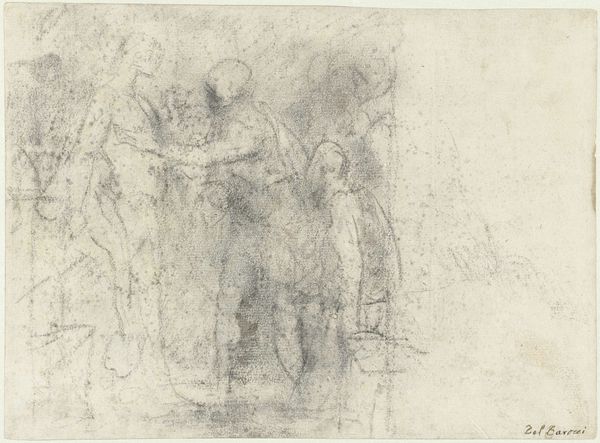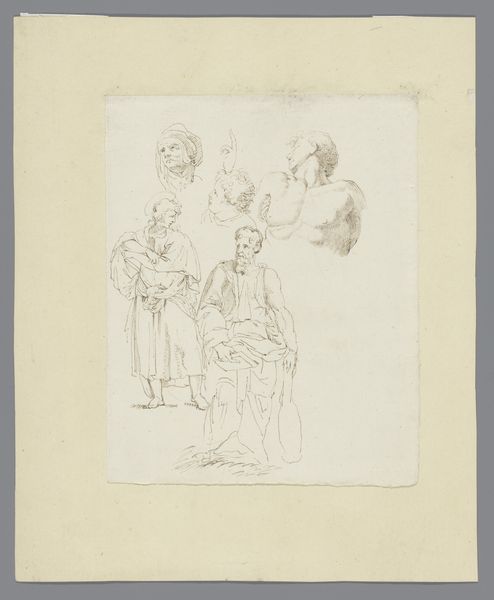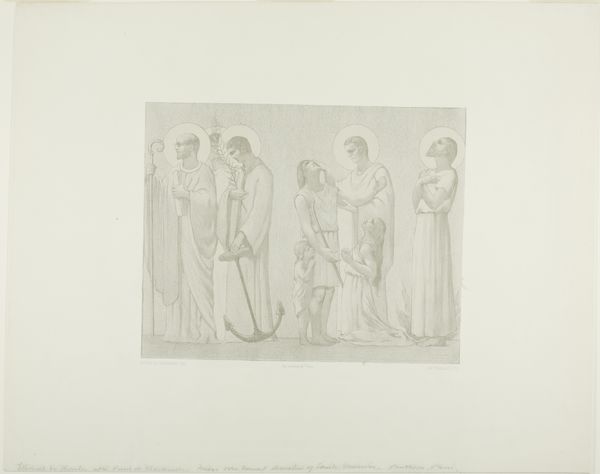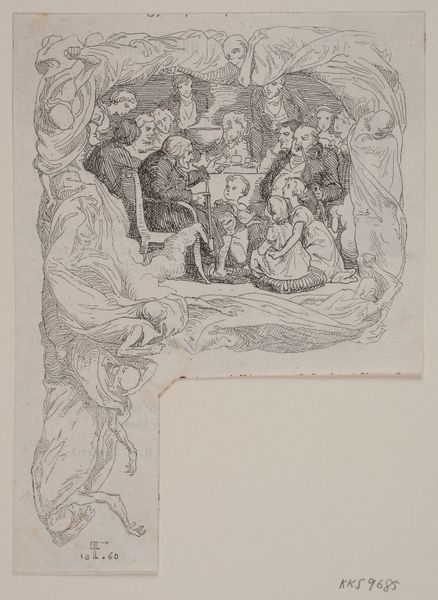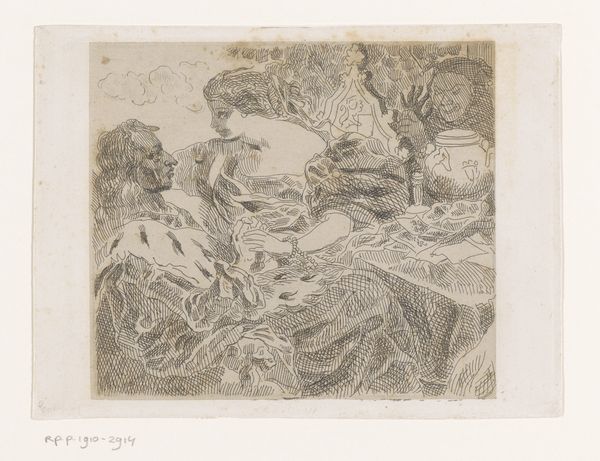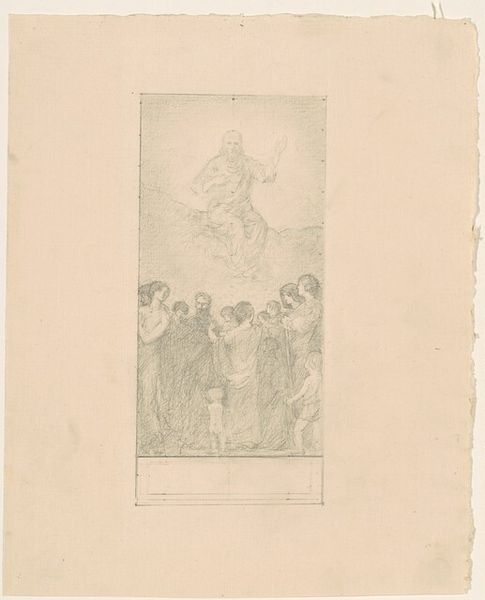
drawing, print, etching
#
drawing
#
aged paper
#
toned paper
#
light pencil work
#
medieval
#
narrative-art
# print
#
etching
#
pencil sketch
#
sketch book
#
figuration
#
personal sketchbook
#
sketchwork
#
sketchbook drawing
#
pencil work
#
history-painting
#
sketchbook art
Copyright: Public Domain: Artvee
Curator: Welcome. We are standing before James Ensor's 1888 etching, "De zilverling van Caesar," which translates to "The Silverling of Caesar." Editor: My first impression? It’s like peering into a half-remembered dream, all faint lines and blurry edges. The figures seem to emerge from the aged paper itself. Spooky! Curator: That dreamlike quality resonates with Ensor's Symbolist leanings. The work uses etching, giving it that distinctive scratchy texture. Note the title. It evokes a critical juncture where power meets morality, specifically through economic exchange. It begs the question: who is complicit in this transaction? Editor: Ooh, a power play wrapped in ancient robes! But look at the faces, some seem almost… cartoonish, exaggerated. It feels cynical. Are we supposed to take any of these figures seriously? Curator: Precisely. Ensor often employed grotesque imagery to critique social norms and expose hypocrisy. "The Silverling of Caesar" reflects the artist's broader preoccupation with religious and political corruption. The exchange of money suggests betrayal and questions the validity of secular and religious power. How do such scenes reflect our current understanding of ethics, politics, and financial entanglement? Editor: So, not just a historical snapshot, but a timeless mirror. A mirror reflecting our own messed-up priorities. And hey, is that a dog down there on the right? He looks pretty unamused by the whole deal, like, “Can we go home now?” Curator: The dog is definitely a character in this silent drama! Animals were important symbolic components within artwork during this time. It underscores that Ensor used everything to amplify his narrative, giving dimension to those usually voiceless, on the margins of conversations of power. Editor: It makes me wonder what Ensor was truly mad about, you know? Was it the specific biblical story, or something he saw happening around him in 19th-century Belgium? Probably both, huh? Curator: Definitely. By situating it within that specific historical context, we are able to extract contemporary issues relevant to our present-day society, to facilitate an intergenerational dialogue with James Ensor. Editor: It’s a bit unsettling to think some things just… don't change. Curator: Yes, Ensor gives us a scene to reflect upon again and again. It's a perfect summation of those recurring historical themes. Editor: Okay, Ensor, message received. Loud and clear. Or maybe, whispery and suggestive… Either way, thanks for making us think!
Comments
No comments
Be the first to comment and join the conversation on the ultimate creative platform.
